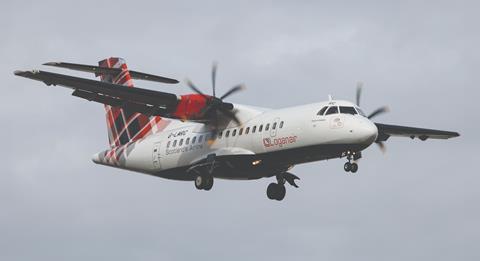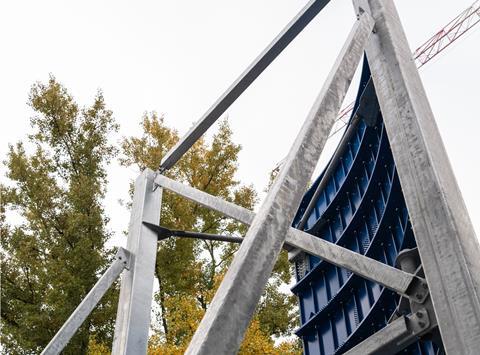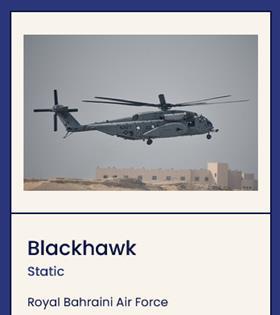The lighter side of Flight International.
Tartan from a winning position
Our congratulations to Loganair for being named Domestic Airline of the Year for the fourth time running by the Scottish Passenger Agent’s Association.

Given that “Scotland’s airline” is the only carrier of any note based north of the border we wonder how much domestic competition Loganair faced.
Flagging fortunes?
Would-be long-haul carrier Global Airlines is hoping to fly the flag for the UK in 2025, as its first Airbus A380 enters a maintenance check in Dresden.
We trust the cockpit celebrations to mark the occasion are not intended as an indicator of the future carrier’s prospects.

Because the Union flag is clearly being flown upside-down – the broad white diagonal stripes should be uppermost at the hoist. Inverting the flag is considered, at best, improper and, at worst, a signal of dire distress.
A place in the sun
Finally, a use for the Airbus A340, the range-capable but thirsty quadjet that rapidly went out of fashion when fuel prices spiked in the noughties.

Architect firm Populous – which is designing a new south stand at Strasbourg’s Stade de la Meinau, home of Ligue Un club Racing – is using upcycled fuselage sections of a decommissioned A340 to provide a sun shading system.
Black Hawk frown

We spotted this howler on the Bahrain International Airshow website’s section detailing the types on display at Sakhir air base near Manama.
The featured shot does at least show a Sikorsky-built helicopter – but rather than being a Royal Bahraini Air Force Black Hawk as described, it’s actually a visiting US Navy MH-53E Sea Dragon.
Peter Duffey
We are sorry to hear of the passing of Peter Duffey, a contributor to Flight International in the late 1960s and early 1970s, under the pseudonym of Mainliner.
After a brief war service, Duffey began his commercial aviation career as a charter pilot in 1946 with Portsmouth Aviation, eventually moving to BOAC, where he became one of the first pilots to fly the Atlantic on the pioneering de Havilland Comet.
In 1975 he was selected as one of eight pilots to help introduce the Aerospatiale/British Aerospace Concorde into service for BOAC successor British Airways.
After mandatory retirement from the flag carrier aged 55, he moved to British Columbia where he continued to fly corporate jets and light aircraft, bringing his total flying hours to 22,000.
He enjoyed a late career as a television and media commentator and his book, Comets to Concordes, was published in 1998.
He died at home in Vancouver on 9 August, aged 98.
From yuckspeak to tales of yore, send your offcuts to murdo.morrison@flightglobal.com


























